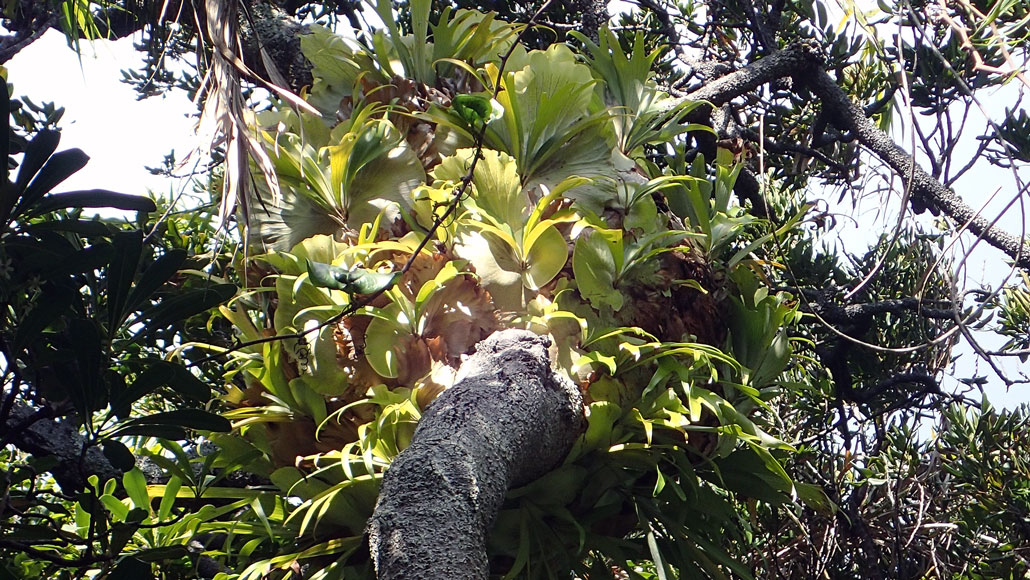Questions for “These ferns may be first plants known to work together as ants do”

Many of this fern colony’s fan-shaped nest fronds (growing close to the tree trunk) are sterile. Thinner strap fronds (sticking up and out from between the nest fronds) are the more reproductively active members of the colony.
Ian Hutton